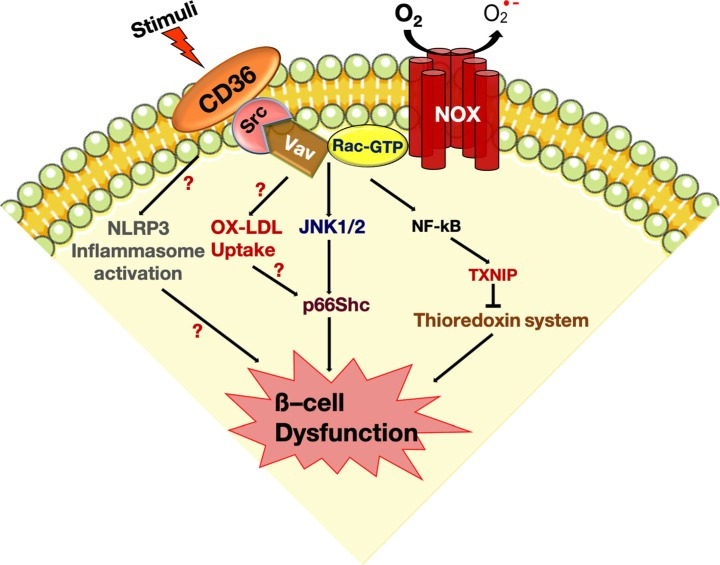Fig. 2. Cluster determinant 36 (CD36)-induced signal transduction and damage in pancreatic β-cells, and its mechanisms. Binding of a variety of ligands to CD36 on the plasma membrane initiates the assembly of a redoxosome (Src-Rac1-nicotinamide adenine dinucleotide phosphate [NADPH] oxidase) complex. Redoxosome activation induces c-Jun N-terminal kinases (JNK) activation, thereby leading to p66Shc mediated mitochondrial peroxiredoxin-3 oxidation via thioredoxin-2 downregulation. Moreover, this complex activates nuclear factor κB (NF-κB) which in turn contributes to the impaired mitochondrial defense leads to pancreatic β-cell failure. Besides future studies are warranted to examine the relationship between CD36 and nucleotide-binding domain leucine-rich repeat (NLR) and pyrin domain containing protein 3 (NLRP3) inflammasome activation in the pancreatic β-cell dysfunction and failure. Activation of CD36 signaling by oxidized low-density lipoprotein (OX-LDL) initiates the activation of the signalosome complex and inflammatory programs such as the production of reactive oxygen species (ROS) and p66Shc contribute to the pathogenic pathway that links to β-cell dysfunction and failure. GTP, guanosine triphosphate; NOX, nicotinamide adenine dinucleotide phosphate (NADPH) oxidase; TXNIP, thioredoxin-interacting protein.

